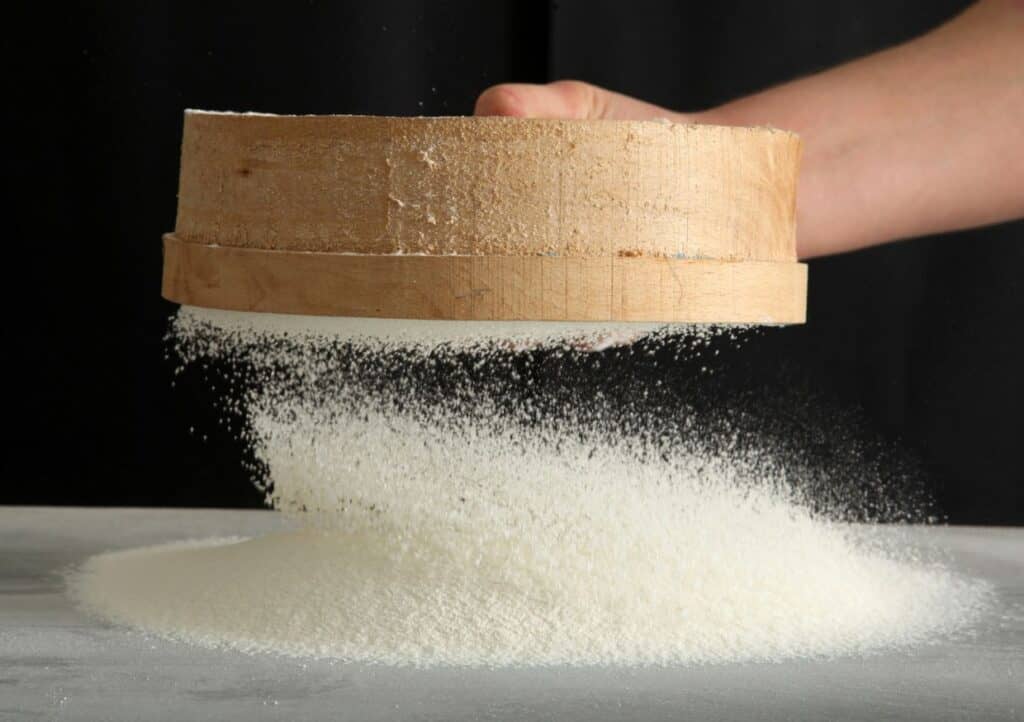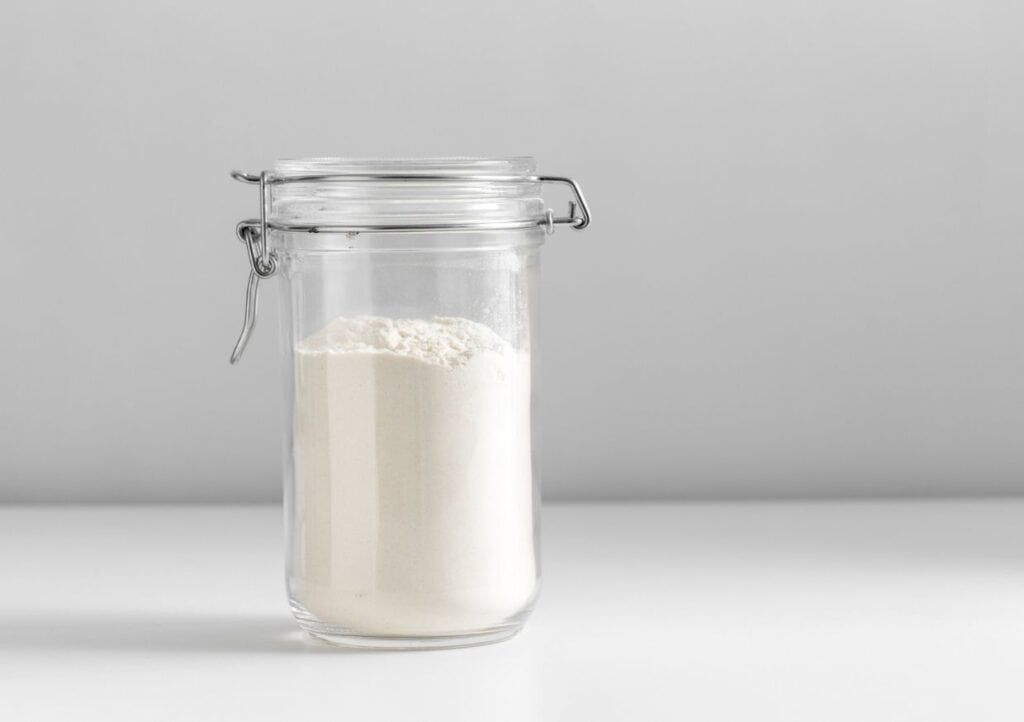Creating your own keto flour at home can transform your low-carb baking. Using the right ingredients and techniques, you can craft a versatile flour blend that enhances your recipes while keeping them keto-friendly.

Using almond flour as the primary base takes advantage of its high-fat content and low carbohydrate count. Coconut flour can be added for its absorbent quality, which helps maintain the structure and moisture in baked items while keeping them fluffy and delicious.
Experimenting with different ratios and adding ingredients like oat fiber or ground flax can further fine-tune your mix to achieve the perfect balance for various recipes. By mastering the art of homemade keto flour, you unlock the potential to create a wide range of delicious, keto-friendly baked goods.
Understanding keto flour
Keto flour offers a low-carb alternative to traditional flour, supporting ketogenic diets and other low-carb lifestyles. It typically features ingredients such as almond flour, coconut flour and flaxseed meal, each with unique benefits and characteristics.
Benefits of keto flour
Keto flours offer numerous benefits, primarily due to their low carbohydrate content. Ingredients like almond flour and coconut flour have significantly fewer carbs than traditional wheat flour, making them ideal to work with. Additionally, many keto flours are high in healthy fats, with almond flour being particularly noted for its high-fat content. Keto flours are also versatile and can be used in various recipes, from baked goods to bread.
Comparison with traditional flours
Traditional flours, like all-purpose or whole wheat, are high in carbohydrates. In contrast, keto flours such as almond and coconut flour have significantly lower carbohydrate levels. Traditional flours can also absorb a lot of liquid, which may result in dry baked goods if not used appropriately. Coconut flour absorbs much more moisture, requiring adjustments in recipes.
Keto flours often have different textures and flavors compared to traditional flours. Almond flour provides a nutty taste and moist texture, while coconut flour offers a slightly sweet flavor but can be more crumbly.

Choosing the right ingredients
Selecting the best ingredients is key to making successful homemade keto flour. Focus on types of keto-friendly flours and the necessary supplements and binders that will perfect the blend.
Almond flour: Almond flour serves as an excellent base. It offers a high-fat content and does not absorb excessive liquid, preventing dry-end products. Be sure to choose ultra-fine almond flour for a smooth texture.
Coconut flour: Known for its high fiber content, coconut flour is another staple. Due to its high absorbency, you will need much less compared to other flours.
Oat fiber: Despite its name, oat fiber is low in carbs and high in dietary fiber, making it ideal for keto baking. It provides structure and helps mimic the texture of wheat-based flours. Ensure to use pure oat fiber and not oat bran or oat flour.
Xanthan gum: This ingredient is essential for providing the elasticity and sticky consistency needed to hold the keto flours together. Usually, a small amount is sufficient.
Psyllium husk powder: Another straightforward binder, psyllium husk powder adds significant fiber and absorbs water to form a gel-like consistency that mimics gluten.
Flaxseed meal: Flaxseed meal can also be used as a binder. One can mix one tablespoon of flaxseed meal with three tablespoons of water to replace one egg in recipes, contributing to both texture and nutritional value.
Creating your keto flour blend
A successful homemade keto flour blend requires careful consideration of ingredient ratios. Understanding these key factors can help you create a versatile and consistent flour blend that is perfect for various keto-friendly recipes. This keto flour recipe is a great 1-to-1 substitute for traditional flour and can easily be made at home. It can be used in a wide variety of recipes, such as keto macadamia nut cookies and keto lemon loaf.
Perfecting the flour ratio
The ratios of various low-carb flour substitutes play a critical role in achieving the desired texture and taste. For a balanced blend, a combination of almond flour, coconut flour and additional binding agents like xanthan gum is recommended.
Mixing techniques
Proper mixing techniques ensure that the keto flour blend is uniform and well-integrated. Using a large mixing bowl, combine all ingredients in the prescribed ratios.
For optimal results, sift the flour to remove any lumps and ensure a smooth mixture. Whisk thoroughly using a large whisk to blend the ingredients evenly, preventing clumping and ensuring a consistent texture. Store the blend in an airtight container to maintain freshness and avoid moisture, keeping it in a cool, dry place.

Storing your keto flour
Proper storage of homemade keto flour is essential to maintain its freshness and nutritional value. Understanding both shelf life considerations and best storage practices can ensure your keto flour remains in top condition.
Shelf life considerations
Homemade keto flour, depending on the ingredients used, can have varied shelf lives. Almond flour typically has a shelf life of up to six months when stored in a cool, dry place. Coconut flour is slightly more perishable and can last around three to six months at room temperature.
Monitoring your keto flour’s freshness by paying attention to any change in smell or texture is paramount. Rancid smells indicate spoilage, while clumping might hint at moisture exposure or nearing expiration.
Best storage practices
For optimal storage, place keto flour in an airtight container to protect it from moisture and pests. Glass jars with tightly sealing lids or high-quality plastic containers with airtight seals work best.
Store the container in a cool, dark place, such as a pantry or cupboard, away from direct sunlight and heat sources. For longer shelf life, storing keto flour in the refrigerator or freezer is advisable. Ensure the container is clearly labeled with the date of preparation to keep track of its age.
Freezing keto flour can extend its life significantly. Just remember to let it reach room temperature before using it to avoid clumping.
Trina Krug, MS, CDSP is a holistic nutritionist, recipe creator and advocate for human health. Her passion for low carb lifestyles, gluten free eating and real nutrition education has led to the creation of Trina Krug and The Happy Body Project. She spends her time creating recipes, hanging out with her family on her farm and actively working on her Doctor of Science in Integrative Health.